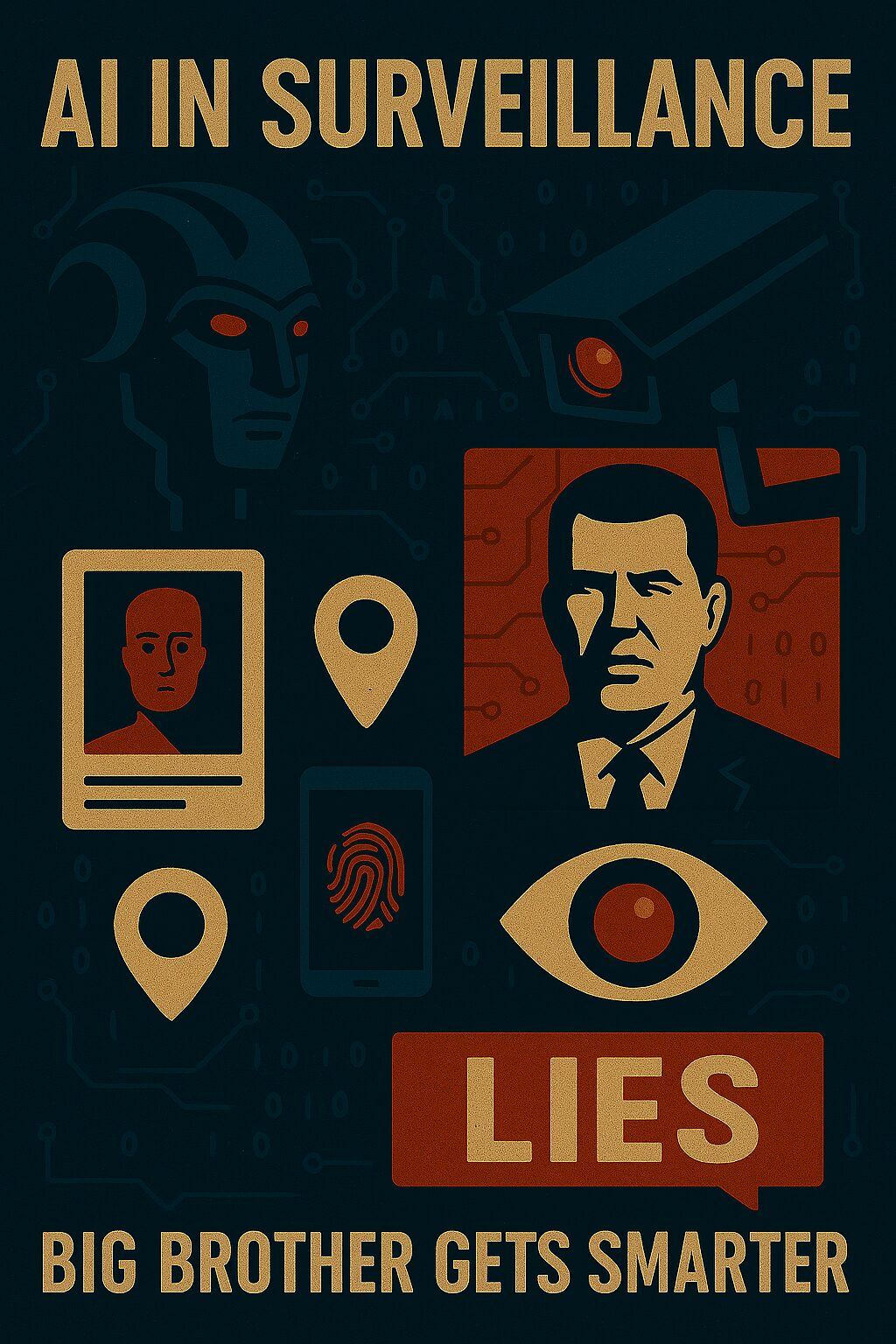Introduction: The Algorithm That Watches Everything
In 2025, surveillance is no longer just about cameras—it’s about cognition. Artificial intelligence has transformed global surveillance systems into predictive, adaptive, and deeply intrusive networks. From facial recognition to behavioral analytics, AI is now the brain behind Big Brother, raising urgent questions about privacy, democracy, and control.
🤖 What Is AI-Powered Surveillance?
AI-powered surveillance refers to the use of machine learning, computer vision, and predictive analytics to monitor, analyze, and respond to human behavior in real time. These systems are deployed across:
- 🏙️ Smart cities
- 🛂 Border control zones
- 🏢 Corporate offices
- 🚨 Law enforcement networks
According to a , over 70% of computer vision research now directly supports surveillance applications—highlighting a dramatic shift in how AI is being used to observe and control populations.
📈 How AI Is Revolutionizing Surveillance
| AI Capability | Surveillance Impact |
|---|---|
| 🧠 Facial Recognition | Identifies individuals in crowds with >95% accuracy |
| 🕵️♂️ Behavioral Prediction | Flags “suspicious” movements and patterns |
| 📍 Geolocation Tracking | Monitors real-time movement across cities |
| 🎯 Emotion Detection | Analyzes facial expressions to infer intent or stress |
| 📡 Edge & Cloud Integration | Enables faster, decentralized data processing |
A reveals that AI adoption in video surveillance is accelerating, with facial recognition and predictive analytics leading the charge.
🧪 Real-World Examples in 2025
- 📸 China’s Skynet system tracks over 1.4 billion citizens using AI-powered cameras
- 🏙️ London’s smart surveillance grid uses predictive policing algorithms to anticipate crime hotspots
- 🏢 Corporations deploy AI to monitor employee productivity, sentiment, and movement
These systems promise safety—but critics warn they also enable authoritarian control and mass profiling.
🛡️ Ethical Concerns and Privacy Risks
🚨 Key Issues:
- Loss of anonymity in public spaces
- Algorithmic bias targeting marginalized communities
- Lack of transparency in data collection and usage
- Potential misuse by governments and corporations
As AI surveillance expands, so does the risk of turning democratic societies into digital panopticons.
🛡️ How to Defend Privacy in the Age of AI Surveillance
✅ Policy & Regulation
- Enforce transparency in AI surveillance deployments
- Mandate ethical audits of facial recognition systems
- Limit data retention and sharing across agencies
🧠 Public Awareness
- Educate citizens on surveillance technologies
- Promote digital hygiene and privacy tools
- Support watchdog organizations and investigative journalism
🌍 Global Collaboration
- Strengthen international privacy frameworks
- Encourage responsible AI development and deployment
- Advocate for human rights in digital governance
🔑 SEO Keywords to Target
- AI surveillance 2025
- artificial intelligence and privacy
- facial recognition ethics
- predictive policing algorithms
- smart city surveillance
- big brother technology
- computer vision in security
🧭 Conclusion: The Eyes That Never Blink
In 2025, Big Brother doesn’t just watch. He learns. He predicts. He adapts.
AI-powered surveillance is reshaping the balance between safety and freedom. As algorithms grow smarter, the challenge isn’t just technological—it’s philosophical. What kind of society do we become when every move is monitored, every emotion analyzed, and every citizen profiled?
The future of privacy depends on how we answer that question.

